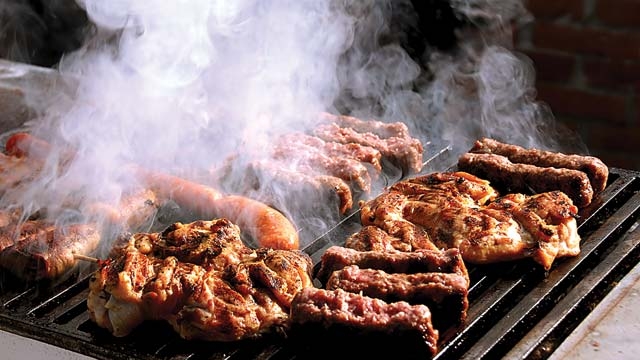
Smoking is the process of flavouring, browning, cooking, or preserving food by exposing it to smoke from burning or smouldering material, most often wood
Considering the harmful health effects of smoked and barbequed foods, the Food Safety Standards Authority of India (FSSAI) under Union Health Ministry has directed all Food Inspectors across India to ensure that code of practice for the process is followed properly in their respective states.
Smoking is the process of flavouring, browning, cooking, or preserving food by exposing it to smoke from burning or smouldering material, most often wood. Many chemical contaminants are formed during the combustion of fuel both in the smoking and direct drying process. Examples include polycyclic aromatic hydrocarbons (PAH), dioxins, formaldehyde, nitrogen and sulphur oxides (relevant for formation of nitrosamines etc).
Furthermore, heavy metals are also found in combustion gases. The types and amount of contaminants depend on the fuel used, the temperature and other parameters. According to doctors, cancer is a primary human health risk of exposure to PAHs. Experts have also linked PAHs exposure with cardiovascular disease and poor fetal development.
While the short-term symptoms of exposure to these compounds are eye irritation, nausea, vomiting, diarrhoea, and confusion, long-term health effects may include cataracts, kidney and liver damage, and jaundice.
“Commercial and domestic food preparations such as smoking, drying, roasting, baking, barbecuing or frying are recognised as possible source of these contaminants. FSSAI has adopted the Code of Practice for the Reduction of Contamination of Food with Polycyclic Aromatic Hydrocarbons (PAH) from smoking and direct drying processes from Codex Guidelines,” said Kumar Anil, Advisor (Standards), FSSAI in his letter to State Food Inspectors.
“We have asked the state food inspectors to sensitise stakeholders and encourage them to follow this code of practice during the process of smoking and drying so as to eliminate the contamination of food with PAHs,” he said.
The FSSAI has said that the Code of Practice and the guidelines could also be used as the basis for information to consumers. Processes such as smoking and direct drying provide a wide variety of food textures and flavours and consequently a broader choice for consumers. Many types of smoked and dried fishery products like Masmin, smoked meat products like sarep, aakhuho are traditional food items, where these types of processes have been used to prolong the storage period, keep quality and provide flavour and consistency required by consumers.
The extension of shelf life may also have an effect on the nutritional value of foodstuffs, such as preservation of the vitamin content.
“Foods as sold in restaurants and by roadside vendors needs to be quality controlled and repeatedly inspected from multiple angles; excessive use of processed and smoked foods, use of trans fatty acid containing oils, reheating in same oil, for hygiene etc.
This is no small job; and human resources for containing these food related problems is inadequate in India,” said Dr Anoop Misra, Chairman at Fortis-C-DOC and National Diabetes, Obesity and Cholesterol Foundation.
No comments:
Post a Comment